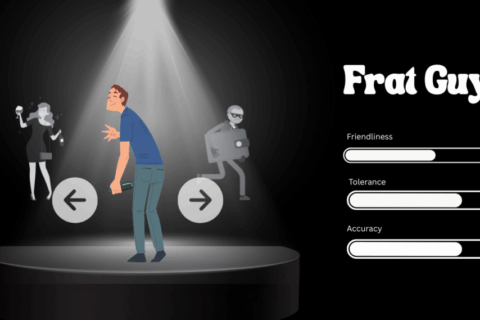Some people say the world is cyclical, and no, I’m not talking about how the earth is round. Fashion, the television and movie industries and the world of music seem to be on a repeating pattern often. It’s the same for the resurgence of the vinyl record in the music industry.
And one of the biggest demographics buying those records? Ppeople who missed the vinyl trend the first time around. Yes, that means college students.
“What you see is a whole generation that grew up with CD’s and cassettes, but they didn’t even know what a record really was,” said Quinn Bishop, the owner of Cactus Music. “They discovered it on their own, so I think there was a lot of people who thought that it was nostalgia or retro or some kind of fascination, when, in fact the millennial generation kinda really see it as defining their generation, it’s theirs.”
In the past few years, the sales of vinyl records have spiked, and that’s backed up by the Recording Industry Association of America’s 2015 mid-year industry shipment numbers.
According to the report, physical sales for Long-Play record, which you know as LPs, was up from an estimated 6.5 million in the first half of 2014 to 9.2 million in the first half of 2015, an increase of nearly 43 percent, while sales increased from almost $146 million to almost $222 million. MusicWatch reported 47 percent of the people buying vinyl’s now are in the 13-to-25 age demographic. That number jumps to 72 percent when that demographic is increased to encompass the 13-35 ranges.
“I think there’s that bookshelf mentality that it’s like ‘I like all this other stuff, but I love this so I’ll buy it on LP,’” Bishop said. “Go see a band and at the merch table, it’s all LP’s that are being sold, it’s definitely like a badge of people’s affection for certain artists.”
Bishop has owned Cactus Music for just eight years now, but said that he and a core group of a few other staff members have been involved with the shop for anywhere from 18 to 30 years.
One of the major developments to come from the vinyl resurgence: the trend of repressing, where records that experienced limited printings or went out of printing several years ago find their ways back onto retailers’ shelves, but Bishop said that’s not always a good thing because the remastering can mess with the sound.
But while there are a fair share of difficulties that have come along with the resurgence of vinyl, Bishop thinks that records aren’t going anywhere any time soon.
“There’s people who always loved records, but records kinda vanished from the marketplace, you couldn’t really find them,” Bishop said. “So once they became readily available again with new music and people started buying them and you had the dormant vinyl buyer, who may even be a baby-boomer, 50 or 60 years old, started buying records again and then you’re starting to see a lot of younger people buying records, but I think the trend that is happening now is fostering an affection for the format that will probably sustain cool, independent retail for decades to come.”
“For some of them, it’s going to be an affectation,” Bishop said. “It’s going to be something that is like the Rockabilly chain wallet, they’re not going to want to have anything to do with it in a few years or they just don’t really care about it, but there are a lot of people who buy records who will continue to buy records for a long time and continue to search for old stuff.”
While he says that vinyl offers wonderful sound quality, while not always the most convenient, Bishop says that record stores provide an experience that is completely its own.
“It’s neat to see responsible parents who are taking their kids to the record store, especially during the summer when it’s so hot, it’s a great day to go to the record store and wander around the aisles and discuss music,” Bishop said. “I think the culture of the record store is what sustained them and now it’s kind of full bloom. Not all record stores are essential businesses, but certainly some of the most unique businesses in whatever city you are in.”




Recent Comments